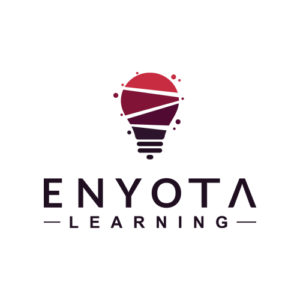Designing A Modern Sales Training Framework
2020 definitely changed everybody’s outlook on the way standard business operations take place. Sales being a primary business operation for most businesses was among the first to re-order itself. Why? Because face-to-face meetings were no longer an option.
Field Sales Re-Envisioned
Well, field sales are still out of the picture for now. Your sales agents may be ready to give it a go, but your prospects may not be ready yet. The next best option is telesales. Keeping that in mind, it is important to note that the etiquette of a field sales agent versus that of a telesales agent is polarized. Where body language and in-person presence played a huge role for field operators, voice modulation, speech clarity, and remote presence is important.
As telesales is practiced over VOIPs and telephones, the biggest advantage for L&D engaged in such training is that they can use the very same tools to deliver relatable training as well. You do not really need a physical trainer to help your telesales agents understand the art of picking up the phone and making a call. What you actually need is a confident trainer with the ability to get across to your learners over remote communication tools.
Best Approach To Telesales Training?
Frame a custom eLearning sales course that covers the subject in both theory and practical training. Moreover, the training must be unique to your offerings, so off-the-shelf training won’t work. Mix it up, use fact-based training with scenario re-enactment. Break the rest into a VILT section for first-hand one-on-one interactions with a remote trainer. To end the program, throw in a round of assessments.
Get creative with this and you’ll realize that a lot can be planned and achieved.
Email Marketing Campaigns And Direct Lead-Gen Outreach
Ok, writing is not everybody’s cup of tea. And, assuming that your sales agents are effective written communicators as they are oral communicators is a gross miscalculation. As a result, expecting all your remote sales professionals to write crisp emails and direct outreach notes to prospects is an overshoot. Writing requires theoretical and practical training at the same time. Alongside that, providing a vast library of sales emails as examples is very important as well.
And that is only the beginning. The tone of language, set and sequence of sending emails, learning conversion tracking tools, studying the corporate lingo, and so much more contributes to the success of your email campaigns.
How Does One Approach This Training Framework?
Design modules that cover the basics of sending emails and meeting invites. Include tips that emphasize grammar, tone, language, and conciseness of emails. Segment sections into micro-formats to not overwhelm your learners and include examples that outline the best outreach emails.
Also, consider social learning here. Sharing the best emails from among your group of learners is the best way to promote peer-to-peer knowledge transfer.
Social Media Is In, Are You?
Facebook and LinkedIn are amazing social media platforms that are working toward helping more businesses reach their prospective clients with minimal effort and resources. Both platforms are working hard to simplify the process of identifying the right prospects. However, for your staff to successfully use a platform in order to identify and introduce themselves to prospects over social media is a completely different ballgame.
Why? Because people are far less likely to respond to sales pros over social media than if they met in person. And for sales pros to get the right response, their profile must come across as interesting or have some value for the prospect they are approaching—and getting your profile right is not easy.
Additionally, specific lead generation tools within a social media platform, like LinkedIn’s Sales Navigator or Facebook’s hyper-personal advertising tool, cannot be used from the get-go. There is a learning curve associated with such tools that learners need to get over before successfully utilizing them to the fullest.
How Should You Approach Social Media Training?
Designing media-based training with screenshots and how-to videos on tool usage will work here. Moreover, the training should revolve around how to approach the right people online and how to present a good profile to them. Also, training sales pros on how to take the right set of actions when interacting with the right prospect is important. Social learning can work here as well. Peers can teach others how to create the best social media profile that works.
The Training Itself Must Go On
It is very important to understand that face-to-face training is something to avoid. Where once traditional training was responsible for training sales pros on both field sales and telesales, today eLearning and online training are the only options we have. It is important to move the training function online just as the sales process itself is moving online as well.










